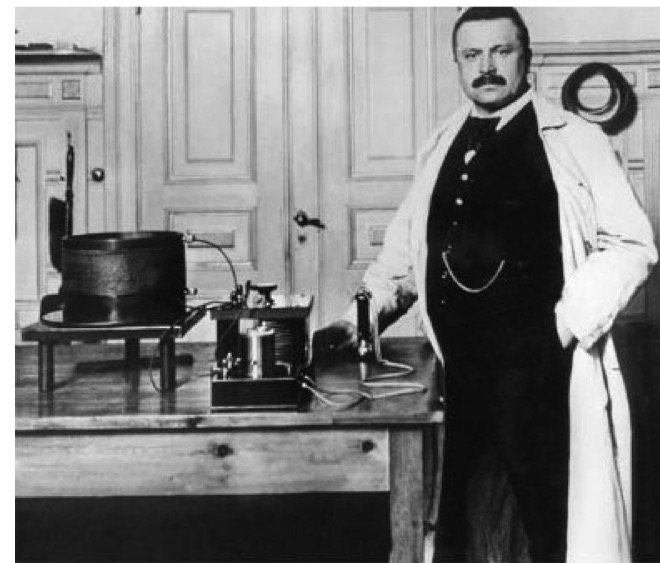History (1910): Poulsen Records on Magnetic Wire Voice
Of emperor Franz Josef of Austria at Paris exhibition
This is a Press Release edited by StorageNewsletter.com on February 15, 2018 at 2:23 pmThis article comes from the Computer History Museum.
1898: Poulsen records voice on magnetic wire
Valdemar Poulsen records Emperor Franz Josef of Austria at Paris exhibition
Poulsen with his wire recorder (c. 1910)

Familiar with Edison’s mechanical recording phonograph, American inventor Oberlin Smith (1840-1926) experimented in Bridgeton, NJ in 1878 with magnetic recording on steel wire and on cotton and silk threads impregnated with steel dust and fine wire clippings. He did not complete a working machine “on account of a press of other work.” In 1888 he offered the idea to the public via an article in the British magazine Electrical World.
At the Copenhagen Telegraph company, in 1898, Danish inventor Valdemar Poulsen (1869-1942) recorded his voice by feeding a telephone microphone signal to an electromagnet that he moved along a steel piano wire. In 1899 he filed a patent and founded a company to build the Telegraphone, a pioneering telephone answering machine.
A simple version stored 2 minutes of audio on 130mm (5 inch) diameter steel disks. A recording medium of steel wire wound around a cylinder held up to 30 minutes of audio. Poulsen’s associate Peder Oluf Pedersen (1874-1941) patented electroplating disks with different magnetizable materials.
The Telegraphone received a Grand Prix at the 1900 Paris World Exhibition where it recorded Emperor Franz Josef of Austria.
In 1905, the American Telegraphone company licensed Poulsen’s design for a dictating machine but wire recorders found limited acceptance until the development of vacuum tube amplifiers. Beginning in the 1920s, German, UK and USA companies built generations of machines for radio broadcasting and military applications.
Steel tapes developed in Sweden in the 1930s improved sound quality and remained in use by the BBC and other broadcasters into the 1950s but were eventually replaced by lower-cost tape media.














 Subscribe to our free daily newsletter
Subscribe to our free daily newsletter

